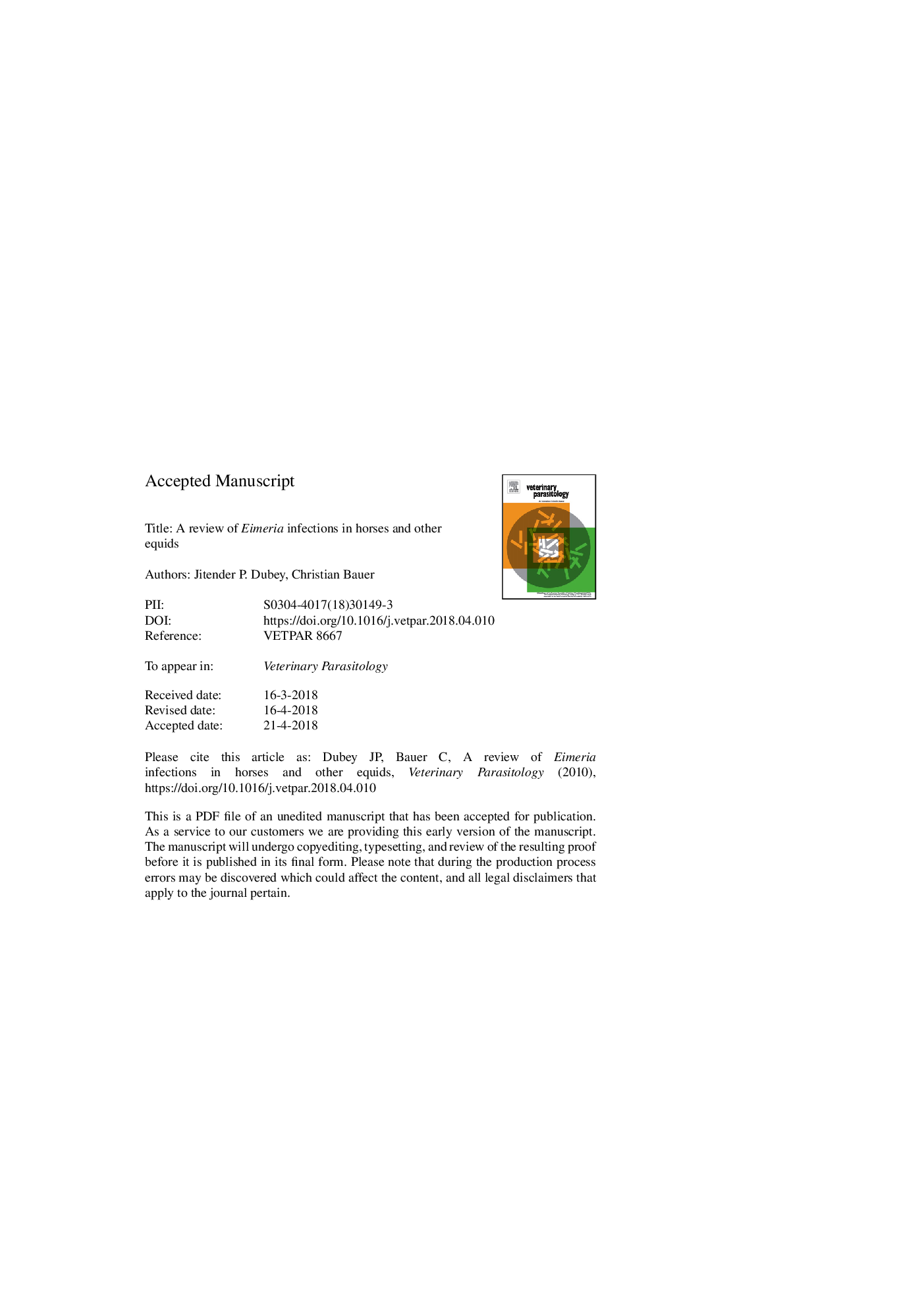| کد مقاله | کد نشریه | سال انتشار | مقاله انگلیسی | نسخه تمام متن |
|---|---|---|---|---|
| 8505958 | 1555620 | 2018 | 36 صفحه PDF | دانلود رایگان |
عنوان انگلیسی مقاله ISI
A review of Eimeria infections in horses and other equids
ترجمه فارسی عنوان
بررسی عفونت های ادمیریا در اسب ها و سایر بز ها
دانلود مقاله + سفارش ترجمه
دانلود مقاله ISI انگلیسی
رایگان برای ایرانیان
موضوعات مرتبط
علوم زیستی و بیوفناوری
علوم کشاورزی و بیولوژیک
علوم دامی و جانورشناسی
چکیده انگلیسی
There is considerable confusion concerning validity of Eimeria species in equids, and endogenous developmental stages and pathogenicity of equid Eimeria. This paper summarizes worldwide information on history, structure, life cycle, pathogenicity, prevalence, epidemiology, and diagnosis of Eimeria infections in equids. The following conclusions were drawn. Although three species of Eimeria; E. solipedum, E. uninugulata, and E. leuckarti were named from horses, only E. leuckarti is a valid species infecting equids, including horses, donkeys and zebra. We consider E. solipedum, E. uninugulata and Isospora sp.as spurious/contaminants with coccidia from other hosts. E. leuckarti oocysts are distinctive, dark brown and up to 94â¯Î¼m long and up to 79â¯Î¼m wide. Its gametogonic stages and oocysts are present in the lamina propria of small intestines. In equids naturally infected with E. leuckarti, only sexual stages have been confirmed. In most of the approximately 50 cases of histologically diagnosed cases of E. leuckarti infection, this infection was considered coincidental or of no clinical relevance. However, in some cases E. leuckarti was considered pathogenic, causing diarrhea and enteritis. The prepatent period is long, 30-37 days or more in experimentally infected equids. Natural infections have been found in 4 week-old foals, indicating that foals can become infected on the day of birth. The number of oocysts excreted is not correlated with clinical signs.
ناشر
Database: Elsevier - ScienceDirect (ساینس دایرکت)
Journal: Veterinary Parasitology - Volume 256, 30 May 2018, Pages 58-70
Journal: Veterinary Parasitology - Volume 256, 30 May 2018, Pages 58-70
نویسندگان
Jitender P. Dubey, Christian Bauer,
